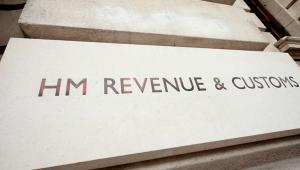The Financial Times recently reported that the chancellor is actively considering a radical reform of pension tax relief – an idea he trailed in last summer’s Budget. At the end of January, NHS England chief executive Simon Stevens called for a new “national consensus” on a “properly resourced and functioning social care system” – that would ideally be agreed in time to be a 70th birthday present for the NHS in 2018.
Meanwhile Norman Lamb, Alan Milburn and Stephen Dorrell – all respected former health ministers, and between them representing the Liberal Democrats, Labour and the Conservatives – are agitating for some form of cross-party commission on future health and social care funding. A window of opportunity may be opening.
Stevens aired, obliquely, some of the recommendations from the Barker Commission’s call for a new settlement for health and social care. Some of the resources currently “tied up in housing, pension pots and other benefits and entitlements” might, he suggested, be used for this along with “more flexibility between current disconnected funding streams for older people”. He questioned the triple lock on pensions, and whether it might be amended. With George Osborne looking at pension tax relief – and with the government, for all its rhetoric, knowing that it did not solve the social care funding problem in November’s Spending Review – territory that has previously been off-limits might be opening up.
The triple lock – the promise that those on the basic state pension will always get an annual rise equivalent to the better of the increase in prices, the increase in average earnings or 2.5% – will eventually go. It will disappear because over time it has a ratchet effect. If the increase in earnings is below the increase in prices, those on the basic State Pension are protected from the inflation that affects people in work. If earnings do better, State Pensioners do at least as well. And if both earnings and prices are depressed they get the minimum 2.5% – as will happen this April. So over time, those on the basic State Pension do better than those in work, a position that can continue for a time, but not forever. Ending the triple lock by, say, scrapping the 2.5% floor, would release expenditure in future that could go to health and social care, the problem being, however, that the amounts would not be very predictable. They would depend on what happened to earnings and prices over time.
Much more predictable would be big changes to pension tax relief that the chancellor is at least contemplating. The relief, in the words of the Pensions Policy Institute (PPI), is “expensive, poorly targeted and does not achieve its policy objective” – partly because it is so poorly understood. It costs around £21bn a year. But because it is granted at the individual’s marginal rate, some 70% of it goes to higher-rate tax payers – the more affluent. For years, policy academics have argued it would be fairer and more progressive to have a single rate. A flat rate of 20% – equal to the standard rate of income tax – would save the Treasury around £12.5bn annually, the PPI calculates – assuming no change to pension savings as a result. Relief at 25% – a bigger incentive for the lower paid to save than is provided by the current arrangement – would save around £6bn a year. Both sums are serious money. A change like this would allow the tax relief to be presented differently – for example, “You save £3 and the government will add £1.” And for a chancellor whose opening promise on austerity was “we are all in this together”, it would be a very one-nation approach, even if he would face howls of protest from the better-off.
The idea is not without its difficulties – not least how to apply it within the remaining defined benefit pension schemes – while its effects on pension saving, something that the government also cares about, are far from entirely predictable.
The £6bn or even the £12bn that could be raised from what is, in effect, a hidden tax rise on the better-off, could of course be saved. But it could also be spent. The NHS and social care have plenty of noisy neighbours available – affordable housing, schooling and infrastructure to name but a few – who would join the bidding for any cash that became available. And it is far from clear just how radical the chancellor wants to be. But his March Budget might just offer the opportunity for a new take on the health and social care funding debate.
This article was first published by The King’s Fund blog and is reproduced here with permission.



















